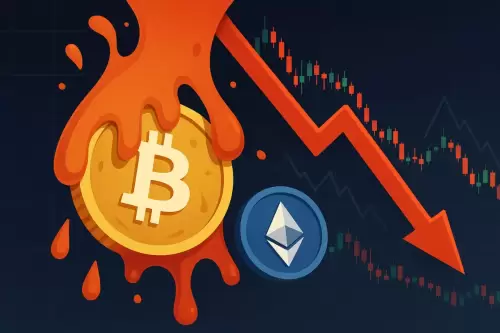 |
|
 |
|
 |
|
 |
|
 |
|
 |
|
 |
|
 |
|
 |
|
 |
|
 |
|
 |
|
 |
|
 |
|
 |
|
Cryptocurrency News Articles
Crypto, Bitcoin, and Corporate Hoarding: A Sustainable Strategy?
Jul 06, 2025 at 01:42 pm
Is corporate Bitcoin hoarding a flash in the pan or the future of finance? We dive into the sustainability of this trend, the risks involved, and potential alternatives.

Crypto, Bitcoin, and Corporate Hoarding: A Sustainable Strategy?
Corporate hoarding of Bitcoin is all the rage, but is it a sustainable strategy? With more companies adding Bitcoin to their treasuries, concerns are rising about the long-term viability of this trend. Let's unpack the key issues.
The Rise of Bitcoin Treasuries
The first half of 2025 saw a surge of corporate entities embracing Bitcoin as a treasury asset. According to recent data, 51 corporate entities have added Bitcoin to their treasuries. Additionally, 21 publicly traded companies have announced their adoption of Bitcoin as a treasury asset. This increased interest is viewed positively by the crypto community, but some experts warn that this growth might not be sustainable. Is everyone jumping on the bandwagon a little too late?
Unsustainable Practices? Expert Opinions
James Check, a Glassnode analyst, raised concerns about companies adopting Bitcoin too quickly. He suggests that many are using BTC as a financial engineering strategy rather than a hedge against inflation. Check points out, "Nobody wants the 50th treasury company." His worry is that startups are entering the Bitcoin treasury space primarily for short-term gains.
Matthew Sigel of VanEck echoed these concerns, noting that Bitcoin treasury companies often raise capital through large at-the-market programs to buy BTC, which he describes as capital erosion rather than formation. Emil Sandstedt of Bitcoin Magazine goes further, suggesting that some of these companies are operating like Ponzi schemes.
Key Reasons for Concern
Experts highlight several reasons why the current Bitcoin treasury model may be unsustainable:
- Lack of Revenue Generating Models: Many new Bitcoin treasury firms lack a core business outside of holding BTC. Their reliance on speculative BTC growth makes them vulnerable to market downturns.
- Overconcentration of Risk: Allocating the majority of treasury assets to Bitcoin exposes companies to extreme volatility.
- Regulations and Liquidity Risks: Increasing crypto regulations could lead to liquidity freezes, reporting burdens, and forced divestments.
The MicroStrategy Playbook
Many companies are attempting to replicate MicroStrategy's success, but without the same level of conviction or capital reserves. This focus on hype could ultimately lead to their downfall, potentially impacting the broader BTC market cap.
Alternatives to Bitcoin Treasuries
Given the risks associated with Bitcoin treasuries, investors might consider alternative strategies to navigate the market:
- Token6900: A speculative meme coin with a fixed cap, designed for short-term gains and community engagement.
- Snorter: An automated trading system for Solana-based meme coins, offering fast swaps and robust protection.
- SUBBD: A utility-centric project powering a content creation platform, providing a long-term hedge with diverse revenue streams.
US BTC-Spot ETF Inflows Offer Support Amid Trade Uncertainty
Despite trade uncertainties, US BTC-spot ETF flow trends remain pivotal. Last week, ETF issuers reported net inflows of $769.5 million despite outflows of $342.2 million on July 1. An upbeat US Jobs Report eased fears of a US recession, boosting demand for BTC-spot ETFs. Net inflows of $601.8 million on July 3 sent BTC to a session high of $110,583.
The Bottom Line
The rise of Bitcoin treasury companies is causing some to pump the brakes. As fears mount about a potential bubble burst, exploring alternative crypto investments might be a prudent move. While most focus on short-term, meme-driven gains, the strong communities forming around these projects could sustain momentum in the long run. Just remember, always do your own research and never invest more than you can afford to lose. After all, in the wild world of crypto, it's always good to have a little fun, right?
Disclaimer:info@kdj.com
The information provided is not trading advice. kdj.com does not assume any responsibility for any investments made based on the information provided in this article. Cryptocurrencies are highly volatile and it is highly recommended that you invest with caution after thorough research!
If you believe that the content used on this website infringes your copyright, please contact us immediately (info@kdj.com) and we will delete it promptly.






























































